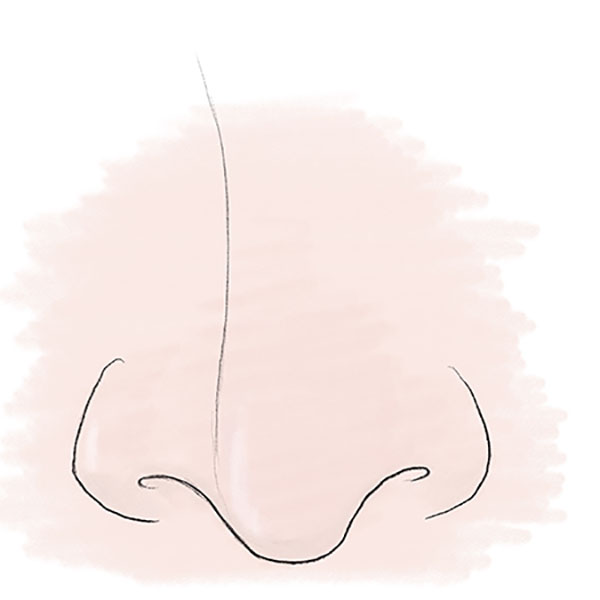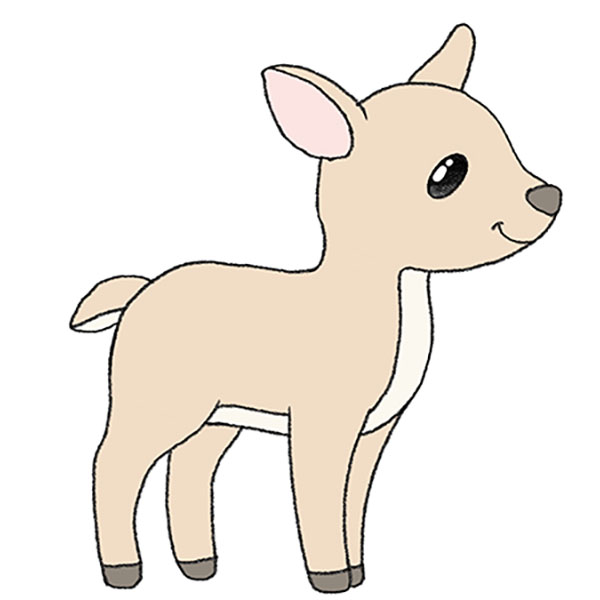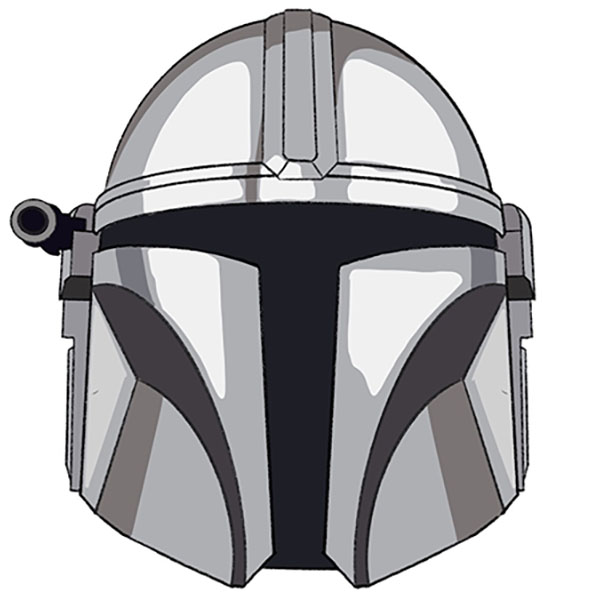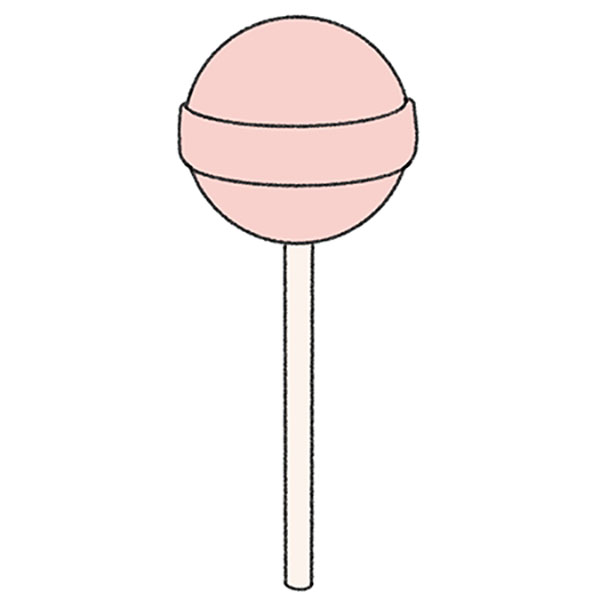How to Draw Wonder Woman
Step into the world of miniature heroes with my specialized guide on how to draw Wonder Woman in chibi form. This tutorial is crafted to simplify her iconic elements – like her star-spangled costume and warrior’s tiara – into adorable, approachable art. It’s a playful spin on the classic depiction, tailored to inspire artists of all ages.

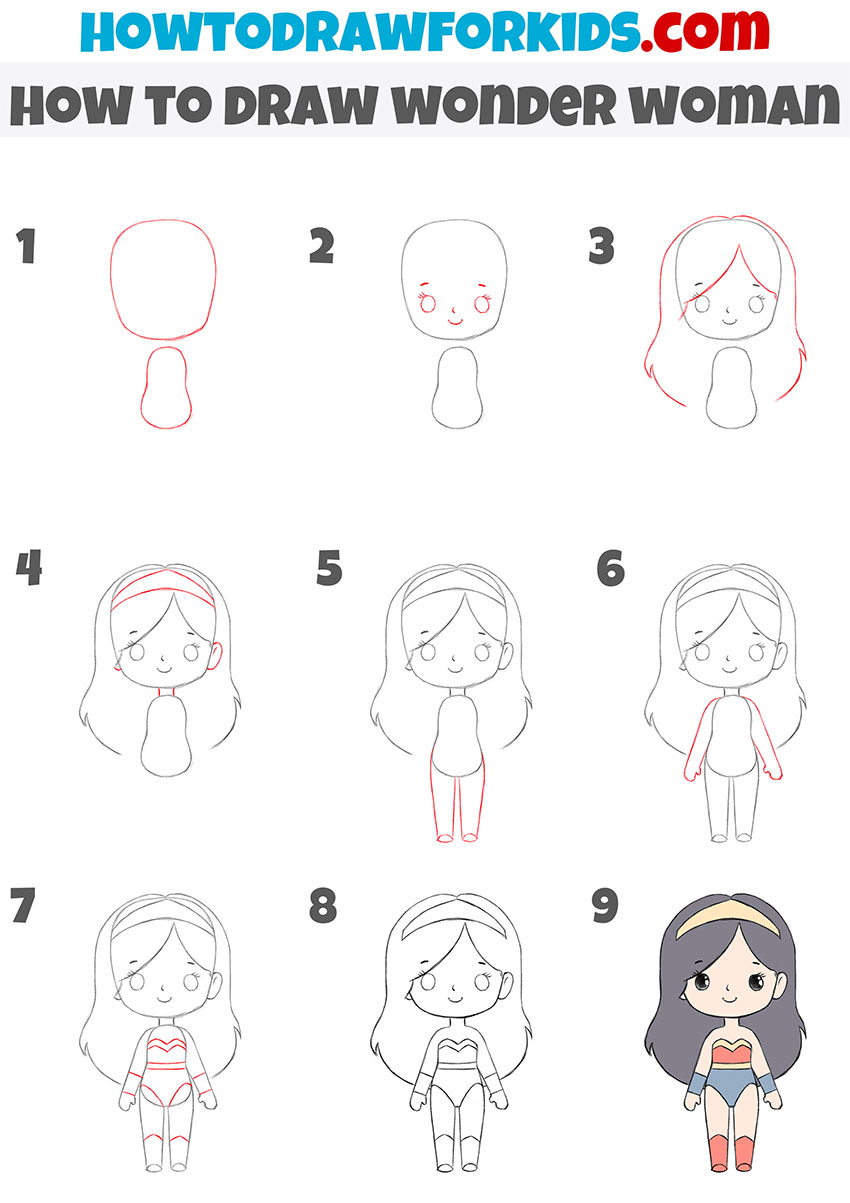
How to Draw Wonder Woman: Basic Information
Welcome to the delightful challenge of bringing to life the warrior princess of the Amazons, as I show you how to draw Wonder Woman in an adorable chibi form. My easy-to-follow tutorial ensures you can capture her iconic strength and beauty in a style that’s both fun and expressive. We’ll transform her from a comic legend to a miniature muse.
This rendition of Wonder Woman distills her majestic features into chibi form, focusing on her stoic eyes and signature tiara. I’ve designed each step to be clear and simple, allowing you to draw her confidently. The chibi style adds a playful dimension, bringing out a different side of Diana’s personality.
Finishing this lesson, you’ll possess not just the ability to draw Wonder Woman in a playful chibi style but also a deeper appreciation for the character. This drawing will stand as a symbol of your growth as an artist and a fan, capturing the timeless appeal of Wonder Woman in a fresh, adorable way.
Wonder Woman Drawing Tutorial
Materials
- Pencil
- Paper
- Eraser
- Coloring supplies
Time needed: 30 minutes
How to Draw Wonder Woman
- Outline of the head and body.
Begin by drawing the head with a simple oval shape, slightly elongated at the sides to form the contour of the cheeks and jawline. For the body, sketch a smaller, vertical oval below the head.
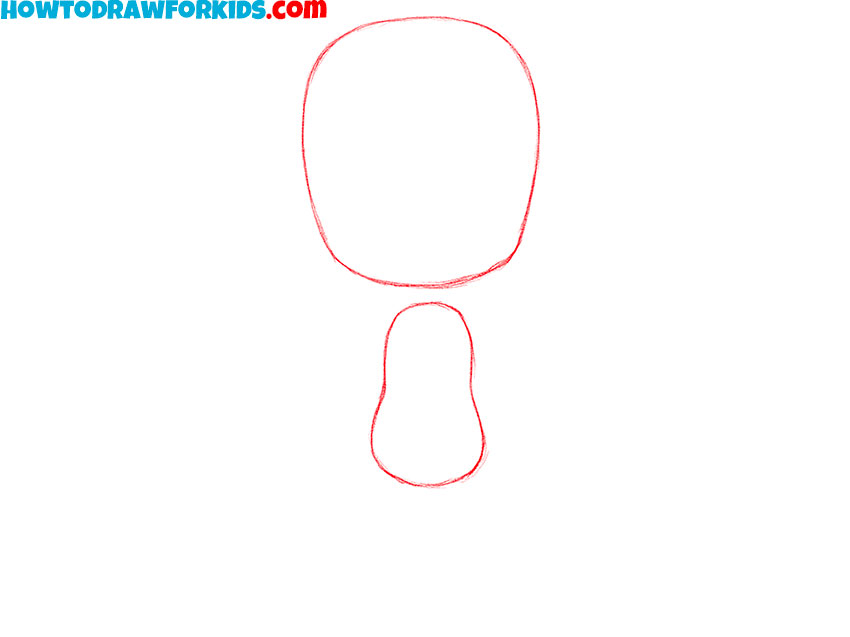
- Sketch facial features.
Add the facial features starting with two vertikal ovals for the eyes, placed just below the center of the face. Sketch a small curved line for the nose and a wider curve for the smile.

- Draw the character’s hair.
Outline Wonder Woman’s flowing hair by adding wavy lines around her face and extending beyond the sides of the head oval. Her hair should look voluminous.
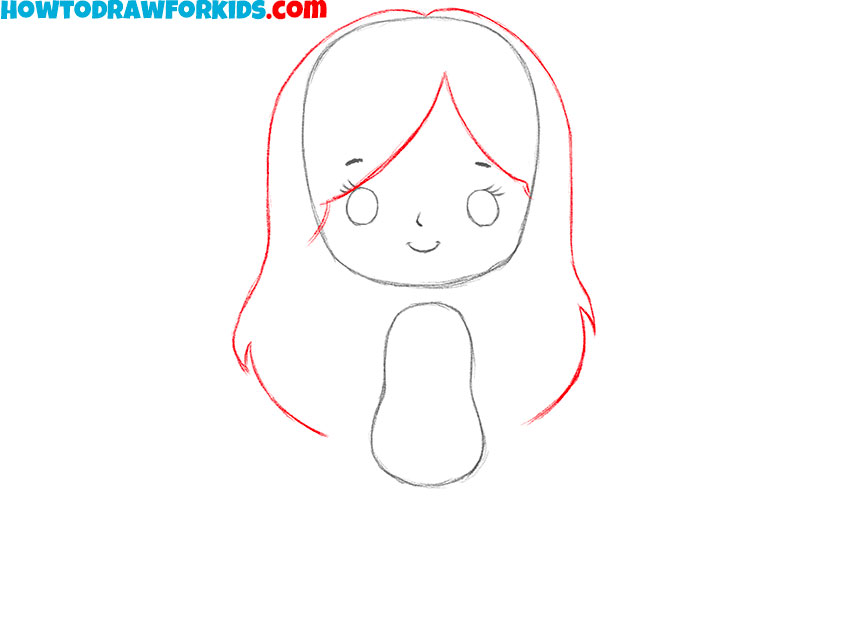
- Sketch Wonder Woman’s Tiara and ears.
Draw the iconic tiara atop her head. Start with a curved line that follows the contour of her forehead, then add a peak in the center. Add the contours of the ears – on the right this is hidden by the hair.
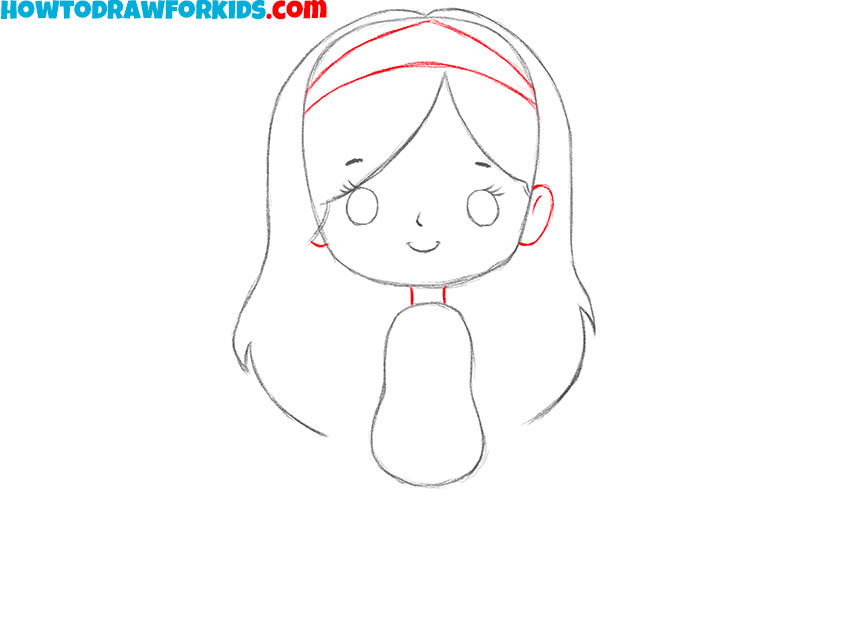
- Draw the legs.
begin by extending two lines down from the lower part of the body for each thigh, tapering them slightly to create the knees. Then, add two more lines for the lower legs, again tapering for the ankles.
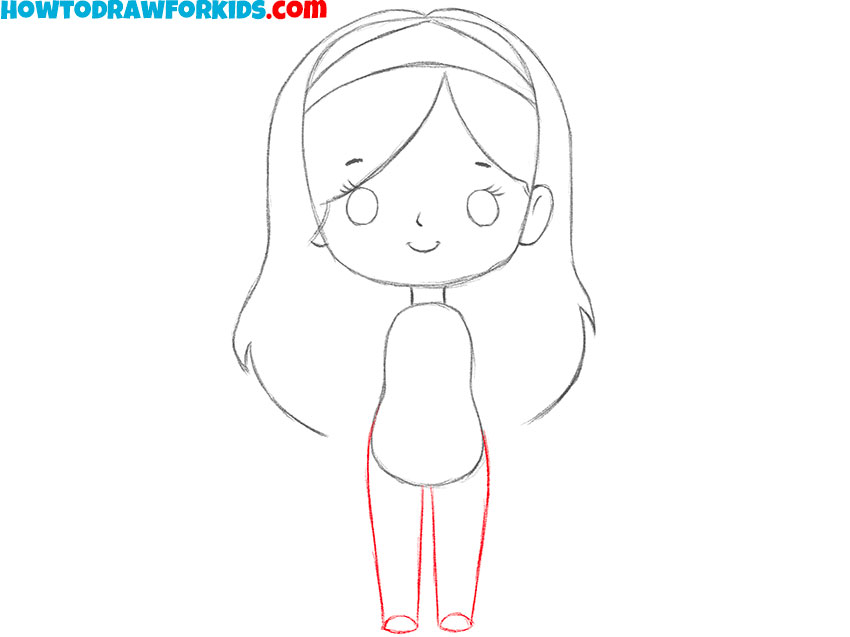
- Sketch the arms.
To complete the Wonder Woman figure, draw the arms as elongated cylinders. The hands can be simplified into shapes that resemble mittens, with a thumb separated from the fingers.
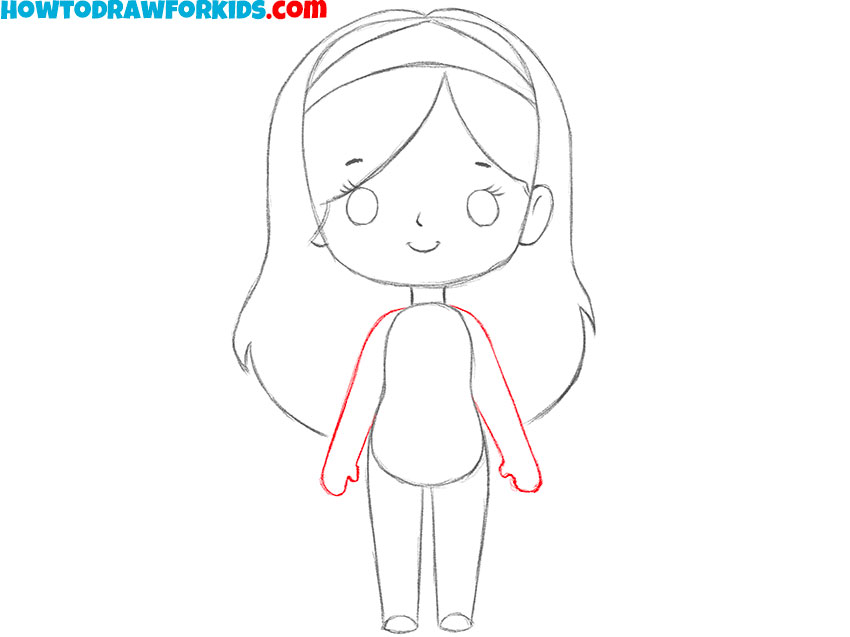
- Add Wonder Wormen’s suit contours.
Indicate the waistline with a horizontal line and sketch the details of her armor, including the W-shaped eagle emblem across her chest, which is both a protective element and a symbol of her identity.
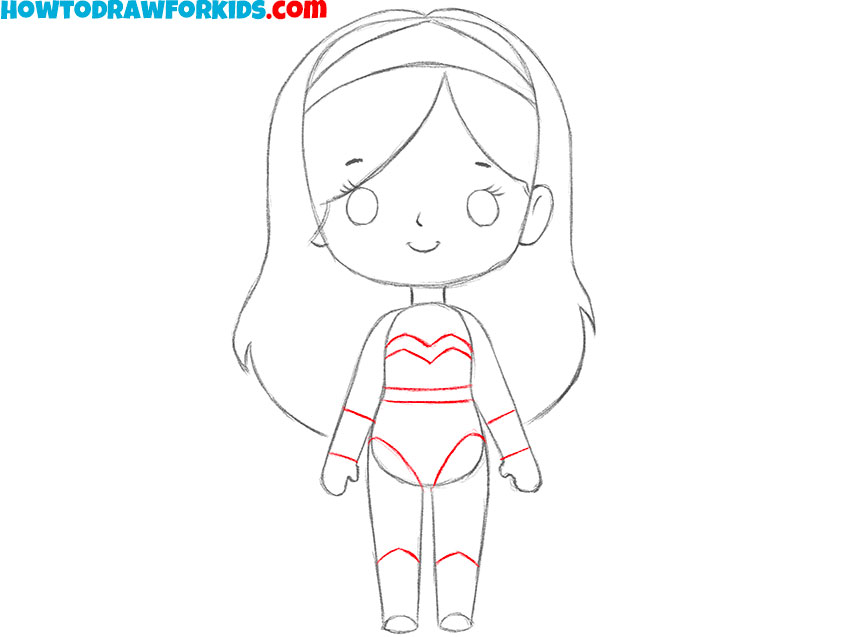
- Sketch out the rope.
In this step, take time to clean up your drawing by carefully erasing any unnecessary lines from the initial sketches. Erasing these extra lines will help clarify your drawing.
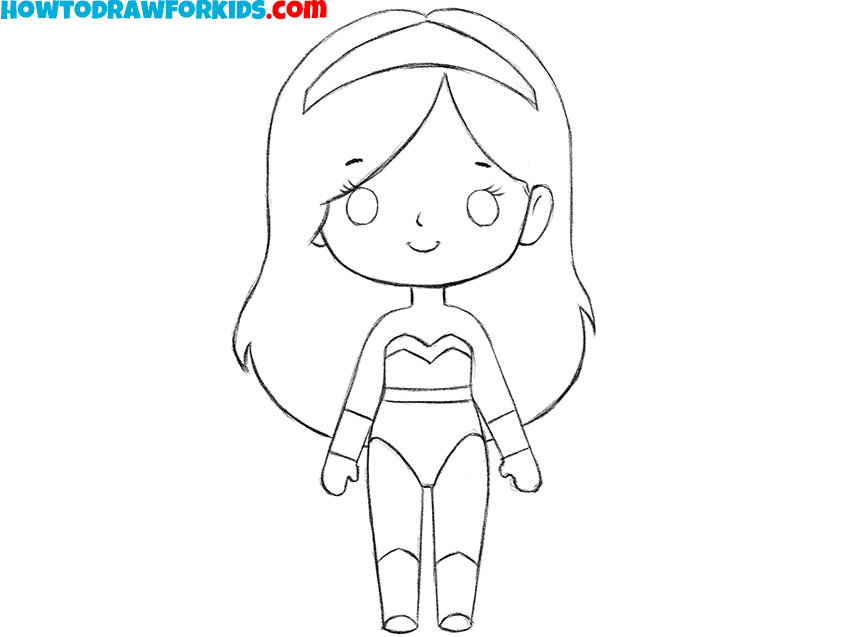
- Color the drawing.
Select bold colors that reflect Wonder Woman’s classic attire. Use blue for the lower part of the suit, and red for the upper part, paying attention to the way the colors complement each other.

How to Draw Wonder Woman: Video Tutorial
Additional Content
To enhance your experience with this chibi Wonder Woman lesson, I’ve also compiled a free PDF file for you. It’s a concise companion to the tutorial that you can download for offline use. Inside, you’ll find additional material aimed at improving your drawing skills once you’ve mastered the basics from the main lesson.
The PDF is not a repeat of the steps you’ve already learned; it’s a resource filled with exercises to deepen your understanding of the chibi style. After completing the initial instruction, this extra content is designed to challenge you, taking your art to the next level and beyond.
Utilize this PDF as a tool to refine the skills you’ve developed in drawing Wonder Woman. It’s tailored to support your journey from foundational techniques to more advanced artistic expressions, ensuring that your journey in art continues with enthusiasm and constant growth.
Advancing Your Chibi Wonder Woman Sketches
Upon completion of our journey in capturing Wonder Woman’s chibi essence, let’s pause to gather some pearls of wisdom that can further polish our craft. Drawing is a constant learning process, and with these tips and tricks, your future chibi heroes will come to life with even more vibrancy and charm.
- Proportion is Paramount: Keep the head oversized to maintain the chibi aesthetic, but balance it with the body to prevent top-heaviness.
- Expressive Eyes: In chibi characters, the eyes are the focal point of emotion. Ensure they are large and expressive to reflect Wonder Woman’s courageous spirit.
- Dynamic Poses: Even with the reduction in detail, strive for dynamic action poses that convey Wonder Woman’s heroism and strength.
- Color Boldly: Use strong, bold colors to mirror her classic costume, which helps your chibi creation pop off the page.
As we close the book on this drawing session, take these tips with you into all your future artistic endeavors. They’re stepping stones to elevating your artwork, each piece of advice a thread in the larger tapestry of your growing abilities. With every new chibi character, you draw, let these insights guide your hand and imagination.
Building a World Around Your Wonder Woman
In the pursuit of artistic excellence, capturing a character is just the beginning. Once you’ve mastered the chibi style of Wonder Woman, why not expand your canvas and elevate your skills further? Here are specific ways you can enrich your drawings, adding depth and context to bring your chibi characters to life:
- Sketch the Scenery: Place your chibi Wonder Woman in the bustling streets of Themyscira, surrounded by ancient Greek architecture and vibrant marketplaces.
- Companion Characters: Draw Wonder Woman alongside a chibi Steve Trevor, depicting a tender moment that showcases their dynamic.
- Iconic Items: Illustrate artifacts like the Lasso of Truth or the Invisible Jet in the background to add a touch of Wonder Woman’s lore.
- Justice League Assemble: Create a scene with chibi Batman and Superman, forming a miniature version of the Justice League in a heroic pose.
Each element adds a layer of narrative and depth, transforming a single drawing into a story. Let your imagination run wild with each scene and interaction, and watch as your art becomes a window into a world as vast as the DC universe itself.
Conclusion
With our journey through drawing chibi Wonder Woman now complete, I hope you feel a sense of achievement and eagerness to continue exploring the vast world of art. My website is home to a plethora of drawing lessons on a wide array of subjects, from mastering the art of sketching beards to bringing the beloved Rudolph to life.
To ensure you stay updated with the latest tutorials and artistic insights, I invite you to follow my social media channels. Your engagement and feedback are what drive this community forward, so if you have any requests or ideas for future lessons, please don’t hesitate to leave a comment below.

